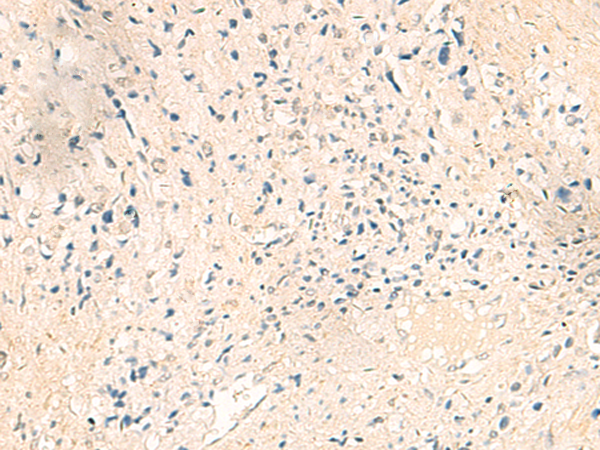

| WB | 咨询技术 | Human,Mouse,Rat |
| IF | 咨询技术 | Human,Mouse,Rat |
| IHC | 1/20-1/100 | Human,Mouse,Rat |
| ICC | 技术咨询 | Human,Mouse,Rat |
| FCM | 咨询技术 | Human,Mouse,Rat |
| Elisa | 1/5000-1/10000 | Human,Mouse,Rat |
| Aliases | SBBI48 |
| Host/Isotype | Rabbit IgG |
| Antibody Type | Primary antibody |
| Storage | Store at 4°C short term. Aliquot and store at -20°C long term. Avoid freeze/thaw cycles. |
| Species Reactivity | Human |
| Immunogen | Synthetic peptide of human IER5 |
| Formulation | Purified antibody in PBS with 0.05% sodium azide and 50% glycerol. |
+ +
以下是关于IER5抗体的3篇参考文献及其摘要概括:
---
1. **文献名称**: *IER5 Mediates DNA Damage Responses via Regulating ATM/ATR Signaling in Colorectal Cancer*
**作者**: Zhang, Y., et al.
**摘要**: 该研究探讨IER5在结直肠癌DNA损伤反应中的作用,发现其通过调控ATM/ATR信号通路影响细胞周期停滞和凋亡。研究使用IER5抗体进行Western blot和免疫荧光实验,证实IER5在放疗后显著上调,并与患者预后相关。
---
2. **文献名称**: *The Role of IER5 in Radiation-Induced Apoptosis of Cervical Cancer Cells*
**作者**: Li, X., et al.
**摘要**: 本文揭示IER5在宫颈癌细胞中响应电离辐射的机制,发现IER5通过激活p53依赖的凋亡通路促进细胞死亡。研究采用IER5抗体进行免疫组化分析,显示高表达IER5的肿瘤对放疗更敏感。
---
3. **文献名称**: *IER5 as a Potential Biomarker for Gastric Cancer Progression*
**作者**: Wang, H., et al.
**摘要**: 该研究评估IER5在胃癌中的表达及其临床意义,发现IER5高表达与肿瘤侵袭性和不良生存率相关。通过IER5抗体的免疫组化检测,证实其可作为胃癌预后的潜在生物标志物。
---
这些文献均涉及IER5在疾病机制中的功能研究,并明确提及使用IER5抗体进行蛋白表达分析。如需更多文献,可进一步限定研究领域或时间范围。
The IER5 (Immediate Early Response 5) antibody is a tool used to study the IER5 protein, encoded by the IER5 gene, which belongs to the immediate-early response family. These genes are rapidly induced by cellular stress signals, including DNA damage, heat shock, or growth factor stimulation. IER5 is implicated in regulating cell cycle progression, apoptosis, and stress adaptation. It interacts with key pathways such as the p53 signaling network and modulates the activity of heat shock factor 1 (HSF1), influencing heat shock protein (HSP) expression during stress conditions.
Research highlights IER5's role in cancer biology, where its expression fluctuates in response to radiation or chemotherapy, suggesting involvement in therapeutic resistance. It also participates in maintaining genomic stability by promoting DNA repair. The IER5 antibody enables detection and quantification of IER5 protein levels in tissues or cultured cells, facilitating studies on its subcellular localization, expression dynamics under stress, and interactions with partner proteins. Applications include Western blotting, immunofluorescence, and immunohistochemistry. Understanding IER5's function through antibody-based assays may reveal therapeutic targets for cancers or stress-related disorders. Commercial IER5 antibodies are typically validated for specificity using knockout cell lines or siRNA-mediated knockdown to ensure reliability in experimental models.
×